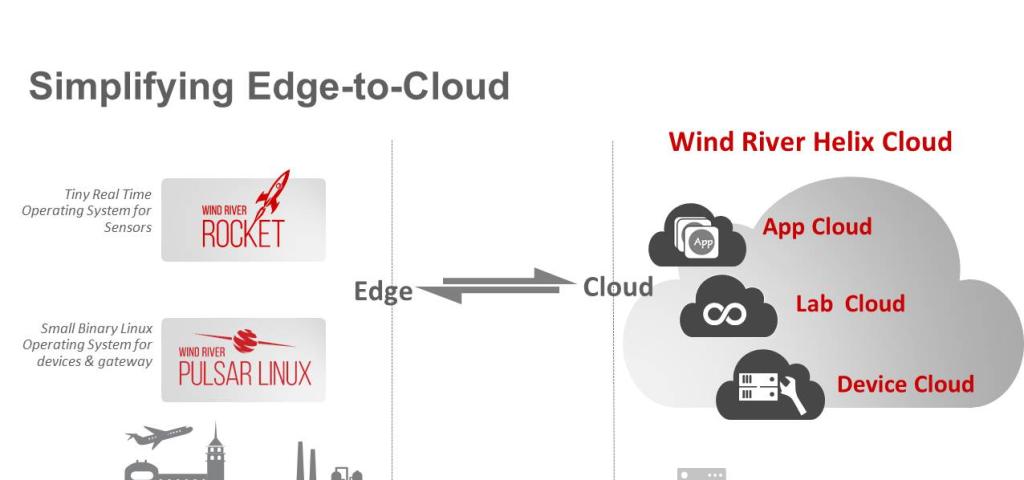
Wind River Expands Edge-to-Cloud Portfolio

It’s an exciting day for us here at Wind River…this morning we announced two free cloud-connected operating systems for the Internet of Things. Wind River Rocket™ is a smaller than small RTOS for devices based on 32-bit microcontrollers (MCUs) and Wind River Pulsar Linux a small, certified, and secure Linux operating system for embedded and IoT devices.
Each OS connects to our Wind River Helix Cloud which we’ve enhanced with application development, testing, and simulation capabilities. Taken together with our Device Cloud, these new technologies address the full range of IoT systems from MCUs to the cloud, developers from maker to professional, and the device lifecycle from development to deployment, and deployment to decommissioning.
One question we’ve heard repeatedly is, “Why?” Why two operating systems and why is Wind River getting into the cloud business?
The short answer is that we don’t believe IoT can happen at scale, as quickly as everyone predicts with the majority of developers sitting on the sidelines waiting for platforms to mature and standards to emerge.
And apparently, neither do developers.
According to this year’s Vision Mobile IoT Developer Landscape, report nearly three million developers involved in IoT come from the mobile space, and three quarters of IoT developers have fewer than two years of experience with IoT.
It’s tempting to view IoT developers as a single group, but it’s clear this is not the case. If IoT is just an evolution of Machine to Machine (M2M), embedded, or some other variety of smart, connected device that went before it, then why would nearly 40% of professional IoT developers say that a lack of hardware development skills is one of their top challenges?
This is where Wind River Helix App Cloud comes in. App Cloud greatly simplifies the process of developing software for devices, allowing you to dynamically build and manage SDKs on a variety of hardware platforms, all from a single secure cloud-based environment. No expertise in the underlying OS or hardware required. App Cloud also makes it easy to run your application on physical hardware, by compiling your application code into a Wind River Rocket image that you can run for free.
This is leveraging the cloud not to capture the lion’s share of the world’s data, but to solve real challenges developers are facing as the Internet of Things takes shape.
As you enter into more commercial segments (industrial, automotive, medical, etc.) the developers have different expectations for real-time, determinism, and reliability and all those other characteristics that go along with embedded. Similarly, software has different requirements at very low power and with no “human in loop” to help a device accomplish things that have been solved in the network or enterprise space for decades. Commercial developers know this, and require an OS like Wind River Rocket that checks these boxes.
For businesses, Wind River Rocket runs on and is free on both leading architectures —including IA and ARM— enabling application portability and flexibility. Also, Wind River can, for a fee, provide some of the benefits businesses have come to expect from a commercial software vendor: world-class premium support, deep expertise in certification, and so on.
At the same time, IoT is creating new requirements for things like gateways that are being built by OEMs and ODMs who have historically served the IT space. The heavy emphasis on source code, the tweaking and tuning that are part and parcel of embedded development are not a fit here. Wind River Pulsar Linux is a binary distribution, ready to run your apps, that comes pre-installed on COTS hardware. We know cost sensitivity matters tremendously in this space and so we’ve worked with leading COTS board manufacturers to make Pulsar free for end users.
You can expect to hear more about these offerings in the days and weeks ahead and by all means, let us know what you think.

